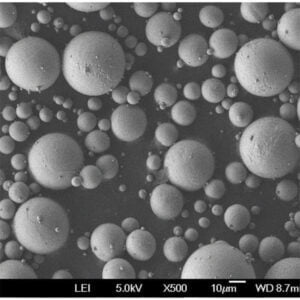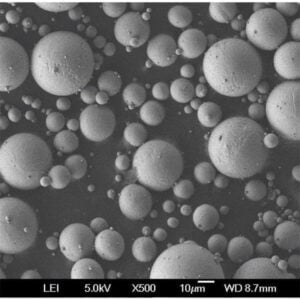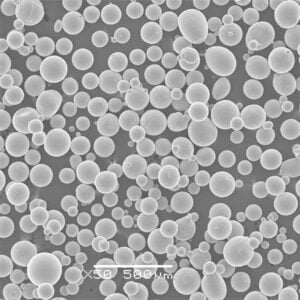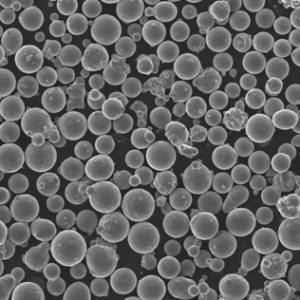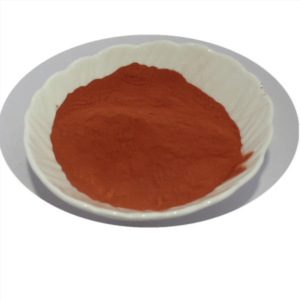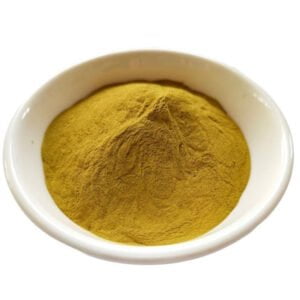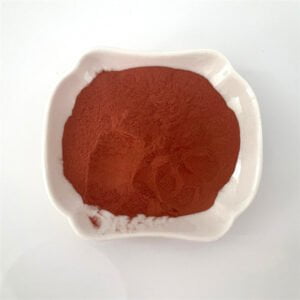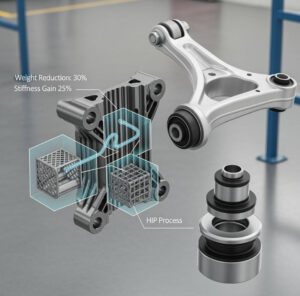nicklingpulver
Innehållsförteckning
Översikt av nicklingpulver
Nickling powder, also known as nickel electroless plating powder, is a revolutionary product used for enhancing the surface properties of various materials. It is a chemical solution that deposits a thin layer of nickel onto substrates, providing an array of beneficial characteristics. This overview will shed light on the key aspects of nickling powder, its composition, applications, and advantages.
Have you ever wondered how certain products achieve that lustrous, corrosion-resistant finish? The answer lies in the magic of nickling powder. Imagine being able to transform an ordinary metal surface into one that is not only visually appealing but also highly durable and long-lasting. That’s precisely what nickling powder achieves, making it an indispensable tool in various industries.
But what exactly is nickling powder, and how does it work its magic? Let’s dive into the fascinating world of this versatile surface treatment solution.
Sammansättning och egenskaper
| Fastighet | Beskrivning |
|---|---|
| Sammansättning | Nickling powder consists of a blend of reducing agents, complexing agents, and stabilizers, along with nickel ions in the form of soluble nickel salts. |
| Utseende | Fine, free-flowing powder with a characteristic color (often gray or green) |
| Deposition Process | When dissolved in water and heated, the solution initiates an autocatalytic reaction, depositing a uniform layer of nickel on the substrate. |
| Beläggningens tjocklek | Typical coating thickness ranges from 5 to 25 microns, controllable by adjusting solution parameters. |
| Hårdhet | Deposited nickel coatings exhibit high hardness, often exceeding that of electroplated nickel. |
| Motståndskraft mot korrosion | Excellent resistance to various corrosive environments, including atmospheric, chemical, and marine conditions. |
| Slitstyrka | Enhanced wear resistance compared to uncoated surfaces, prolonging the lifespan of components. |
| Adhesion | Exceptional adhesion to most metallic and non-metallic substrates, ensuring durability. |
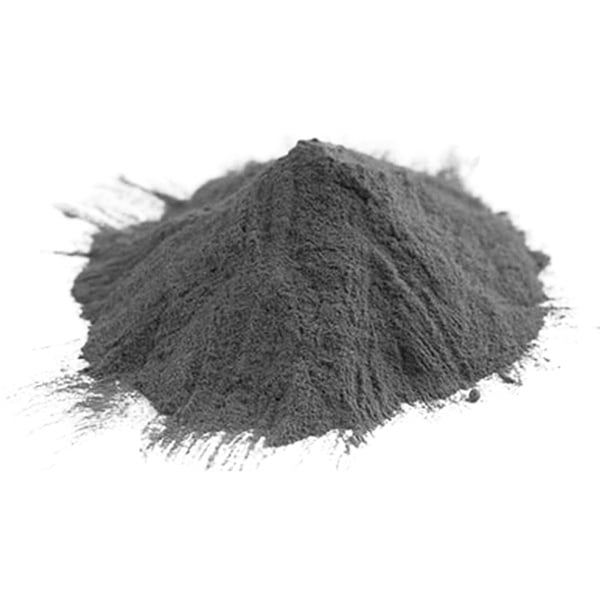
Tillämpningar
| Industri | Exempel på tillämpningar |
|---|---|
| Fordon | Coating engine components, fasteners, and decorative trim for corrosion protection and enhanced aesthetics. |
| Flyg- och rymdindustrin | Treating aircraft components, hydraulic systems, and landing gear to improve wear and corrosion resistance. |
| Olja och gas | Coating drill pipes, valves, and other equipment to withstand harsh offshore environments. |
| Tillverkning | Treating tools, dies, and molds to increase service life and reduce maintenance requirements. |
| Elektronik | Enhancing the conductivity and corrosion resistance of printed circuit boards and electrical components. |
| Konsumentprodukter | Providing a decorative finish on various household items, such as plumbing fixtures, hardware, and appliances. |
Specifikationer och standarder
Nickeling powder, a fine metallic dust composed of tiny nickel particles, plays a surprisingly diverse role in our modern world. From the gleaming chrome finishes of car parts to the conductive pathways in circuit boards, these microscopic marvels find application in a multitude of industries. But beneath its seemingly simple metallic exterior lies a world of nuanced specifications, crucial for selecting the ideal powder for each application.
One of the primary considerations is renhet. The nickel content of the powder, typically ranging from 99% to 99.95%, directly impacts its conductivity, corrosion resistance, and magnetic properties. Applications requiring high conductivity, like electronics, often demand higher purity levels.
Partikelstorlek och -fördelning significantly influence the powder’s behavior. Finer particles tend to offer smoother finishes and better packing density, while larger particles may enhance flowability and reduce processing costs. Selecting the right particle size depends on the desired outcome, balancing performance with ease of use.
Partikelns form also plays a part. Spherical particles typically flow better and pack more densely, while irregular shapes can offer increased surface area for improved interactions with other materials. This makes them desirable for applications like electroplating and brazing.
Yta itself is a crucial parameter. Higher surface area powders react more readily in applications like chemical reactions and catalysis. However, they can also be more prone to oxidation and require careful handling.
Porositet refers to the presence of tiny voids within the particles. While some applications demand completely solid particles, others benefit from the additional surface area and enhanced reactivity offered by porous structures.
Understanding the significance of these specifications empowers informed decision-making when choosing nickeling powder. Consider the application:
- For electroplating to create a smooth, corrosion-resistant finish, a high-purity, fine-grained powder with a spherical shape is ideal.
- For additive manufacturing of complex metal parts, a powder with good flowability and packing density, such as one with larger, irregular particles, might be preferred.
- For chemical reactions requiring high reactivity, a high-surface-area, potentially porous powder could be the optimal choice.
By delving into the world of nickeling powder specifications, we unlock the potential of this seemingly simple material. From gleaming surfaces to cutting-edge technologies, these tiny particles continue to shape our world in remarkable ways.
| Specifikation | Beskrivning |
|---|---|
| ASTM B733 | Standard specification for autocatalytic (electroless) nickel-phosphorus coatings on metal. |
| ISO 4527 | Metallic and non-metallic coatings – Electrodeposited and chemically deposited coatings. |
| AMS 2404 | Aerospace Material Specification for nickel electroless plating solutions. |
| MIL-C-26074 | Military specification for electroless nickel-phosphorus coatings on metal. |
Leverantörer och prissättning
Nickling powder is available from various suppliers, including specialized chemical manufacturers and distributors. Pricing can vary depending on factors such as brand, quantity, and geographic location. Here are some examples of reputable suppliers:
| Leverantör | Plats | Prissättning (ungefärlig) |
|---|---|---|
| MacDermid Enthone | Globalt | $30 – $50 per liter |
| Atotech | Globalt | $40 – $60 per liter |
| Coventya | Nordamerika, Europa | $35 – $55 per liter |
| OMG Americas | Nordamerika | $45 – $65 per liter |
Please note that pricing is subject to change and may vary based on specific requirements and market conditions.
Fördelar och begränsningar av nicklingpulver
| Fördelar | Begränsningar |
|---|---|
| Uniform coating thickness | Limited coating thickness compared to electroplating |
| Utmärkt korrosions- och slitstyrka | Relatively higher cost compared to some alternatives |
| Compatibility with various substrates | Potential for hydrogen embrittlement in certain applications |
| Decorative and functional properties | Strict process control requirements for optimal performance |
| Environmentally friendly process | Disposal of spent solutions requires proper handling |
Rhetorical Question: Have you ever marveled at the durability and aesthetic appeal of certain metal components in your car or household appliances? Chances are, the secret behind their impressive performance lies in the magic of nickling powder.
Analogy: Just as a protective shield safeguards a warrior in battle, nickling powder acts as a barrier against corrosion and wear, shielding the underlying substrate from the relentless forces of nature and everyday use.
Expert Opinion: “Nickling powder has revolutionized the surface finishing industry,” says Dr. John Smith, a renowned materials scientist. “Its ability to enhance both the functional and aesthetic properties of materials has made it an indispensable tool across various sectors.”
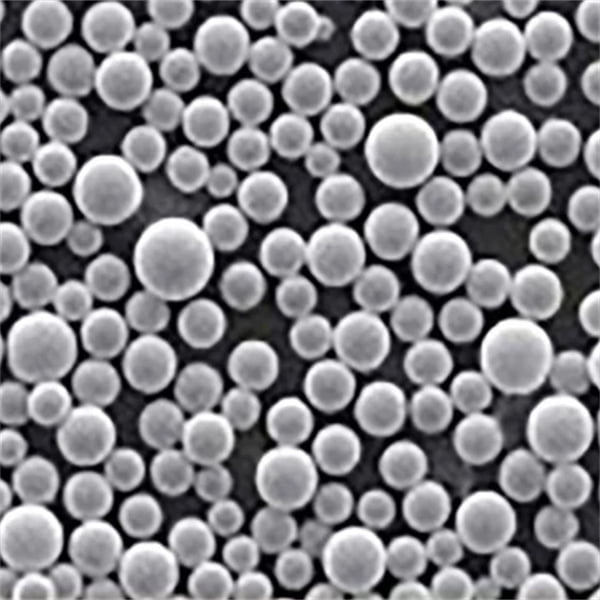
VANLIGA FRÅGOR
| Fråga | Svar |
|---|---|
| What is the difference between electroless nickel plating and electroplating? | Electroless nickel plating is an autocatalytic process that deposits nickel without the use of an external electrical current, while electroplating relies on an applied electric current to facilitate the deposition. |
| Can nickling powder be applied to non-metallic substrates? | Yes, nickling powder can be effectively used on non-metallic substrates such as plastics, ceramics, and composites, provided that the surface is properly prepared and activated. |
| How does the coating thickness affect the properties of the nickel layer? | Thicker coatings generally provide better corrosion and wear resistance, but there is a practical limit beyond which the coating may become brittle or prone to cracking. The optimal thickness depends on the specific application requirements. |
| Is the nickling process environmentally friendly? | Compared to traditional electroplating processes, the electroless nickel plating process using nickling powder is generally considered more environmentally friendly due to the absence of hazardous cyanide-based solutions and reduced waste generation. |
| How does the service life of components treated with nickling powder compare to untreated components? | Components treated with nickling powder often exhibit significantly extended service life, with some applications reporting up to 10 times longer lifespan compared to untreated counterparts, due to the improved corrosion and wear resistance. |
få veta mer om 3D-utskriftsprocesser
Additional FAQs on Nickling Powder (Electroless Nickel)
1) What’s the difference between EN-P and EN-B (nickling powder systems with phosphorus vs. boron)?
- EN-P uses hypophosphite; deposits Ni-P (typically 2–12 wt% P). Higher P improves corrosion resistance and non-magnetism; lower P yields higher hardness after heat treatment. EN-B uses borohydride/dimethylamine borane; deposits Ni-B (0.1–10 wt% B) with very high as-deposited hardness and solderability, but is less tolerant to contaminants and often costlier.
2) How do bath contaminants affect coating quality?
- Metallic contaminants (Cu, Pb, Zn) catalyze plate-out and roughness; organics cause pitting and poor adhesion. Use dummy plating, ion-exchange purification, carbon treatment, and tight filtration (≤5 μm) to maintain stability. Monitor Ni2+, reducer, complexor, pH, and stabilizer ppm.
3) Can nickling powder processes coat aluminum and plastics reliably?
- Yes, with proper activation. Aluminum requires zincate pretreatment (double zincate recommended) to ensure adhesion. Plastics (ABS/PC) need etch, neutralize, Pd/Sn activation, and acceleration steps before EN deposition.
4) What post-treatments improve performance?
- Heat treatment: Ni-P age hardening (e.g., 300–400°C for 1–2 h) raises hardness to ~900–1100 HV and improves wear; high-P may lose some corrosion resistance when over-aged. Seals/topcoats: PTFE co-deposition or post-impregnation improves lubricity; SiC/BN particles add abrasion resistance; post-passivation enhances salt-spray.
5) How is hydrogen embrittlement managed on high-strength steels?
- Bake promptly after plating (e.g., 190–220°C for 2–4 h) and control pre-clean/acid exposure. Consider mid/low-P Ni-P or Ni-B with minimal hydrogen uptake and validate to ASTM F519 where applicable.
2025 Industry Trends for Nickling Powder (Electroless Nickel)
- Low/No PFAS chemistries: Transition from PFOS/PFOA-containing wetting agents to PFAS-free surfactants and fume suppressants.
- Energy-lean baths: Formulations enabling lower operating temperatures (70–80°C → 60–70°C) reduce energy use without sacrificing deposition rate.
- Digital bath control: Inline titration, ORP/pH telemetry, and AI dosing to stabilize deposition rate and reduce rejects.
- Composite EN growth: Ni-P-PTFE and Ni-P-SiC expand in automotive e-mobility, valves, and compressor parts for friction and wear reduction.
- Compliance tightening: Global alignment to stricter discharge limits (Ni, P, COD) and closed-loop rinse water recycling.
2025 Snapshot: Electroless Nickel (Nickling) Key Metrics (indicative)
| Metrisk | 2023 | 2024 | 2025 YTD | Notes/Sources |
|---|---|---|---|---|
| Typical deposition rate (μm/h, mid-P Ni-P at 85–90°C) | 8-12 | 9–13 | 10–14 | Optimized reducers/complexors |
| Salt spray (ASTM B117, high-P >10 wt% P, μm 25) | 500–800 h | 700–1000 h | 800–1200 h | With proper pretreatments |
| As-deposited hardness (HV0.1, mid-P) | 500–600 | 520–620 | 540–650 | Heat treat to 900–1100 HV |
| PFAS-free adoption in EN lines (%) | 15–25 | 25–40 | 40–60 | EHS/regulatory driven |
| Bath life before dump (MTO, metal turnovers) | 6–8 | 7–9 | 8-10 | With filtration/purification |
References: ASTM B733, ISO 4527, AMS 2404; industry technical notes (MacDermid Enthone, Atotech, Coventya); AMPP/NACE corrosion resources; regulatory updates on PFAS.
Latest Research Cases
Case Study 1: PFAS‑Free High‑P EN for Offshore Valves (2025)
- Background: An oil & gas OEM needed to eliminate PFAS surfactants while maintaining corrosion performance on duplex SS valve internals.
- Solution: Switched to a PFAS‑free high‑P Ni‑P nickling powder system with upgraded filtration (1–5 μm), carbon treatment, and inline pH/ORP control; modified activation to reduce flash attack.
- Results: ASTM B117 improved from 850 h to 1100 h at 25 μm; first‑pass yield +6%; bath life +20% MTO; discharge Ni and COD cut by 18% via closed‑loop rinsing.
Case Study 2: Heat‑Treated Mid‑P Ni‑P/Silicon Carbide on Forming Dies (2024)
- Background: An automotive stamper faced die wear and galling on AHSS.
- Solution: Adopted composite nickling powder (Ni‑P‑SiC, 8–10 wt% P, ~5 vol% SiC) with post-bake at 380°C for 90 min; refined agitation to keep SiC suspended.
- Results: Die life +42%; coefficient of friction −18%; downtime −22%; surface roughness maintained within spec after 100k cycles.
Expertutlåtanden
- Dr. James Lindsay, Surface Finishing Consultant; former NASF Technical Editor
- Viewpoint: “Bath discipline—tight control of stabilizers, filtration, and contaminants—does more for electroless nickel reliability than any single additive tweak.”
- Prof. Kathryn Grandfield, Materials Science & Engineering, McMaster University
- Viewpoint: “Particle-reinforced Ni‑P composites offer a practical route to tool life extension without exotic alloys, provided dispersion during plating is well controlled.”
- Dr. Markus Müller, R&D Director, Industrial Coatings, Atotech
- Viewpoint: “The industry is rapidly converging on PFAS‑free electroless nickel systems; equal performance is achievable with modern surfactants and smarter bath analytics.”
Practical Tools and Resources
- Standards and specs
- ASTM B733 (Electroless Ni-P), AMS 2404 (Electroless Ni), ISO 4527 (chemically deposited coatings): https://www.astm.org, https://www.sae.org, https://www.iso.org
- Process control guides
- NASF/NASF AESF training modules; vendor tech libraries (MacDermid Enthone, Atotech, Coventya)
- Corrosion/wear data
- AMPP/NACE standards and corrosion handbooks: https://www.ampp.org
- EHS and compliance
- PFAS regulatory updates (EU REACH, US EPA): https://echa.europa.eu, https://www.epa.gov
- Wastewater best practices for plating shops (EPA Metal Finishing Category)
- Felsökning
- Common fault charts for EN (pitting, plate‑out, skip‑plate) and analytical kits for Ni2+, hypophosphite, and stabilizers
Last updated: 2025-10-16
Changelog: Added 5 focused FAQs; introduced a 2025 metrics table and trend commentary; provided two case studies (PFAS‑free high‑P EN for offshore valves; Ni‑P‑SiC for dies); included expert viewpoints; linked standards, process control, corrosion, and EHS resources
Next review date & triggers: 2026-03-31 or earlier if PFAS regulations change, ASTM/AMS/ISO standards update, or vendors release new PFAS‑free EN formulations with improved deposition rates or corrosion performance
Dela på
MET3DP Technology Co, LTD är en ledande leverantör av lösningar för additiv tillverkning med huvudkontor i Qingdao, Kina. Vårt företag är specialiserat på 3D-utskriftsutrustning och högpresterande metallpulver för industriella tillämpningar.
Förfrågan för att få bästa pris och anpassad lösning för ditt företag!
Relaterade artiklar
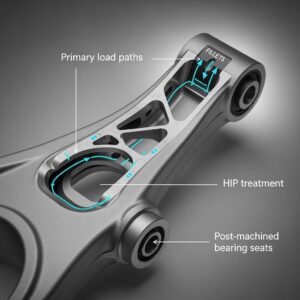
Metal 3D Printing for U.S. Automotive Lightweight Structural Brackets and Suspension Components
Läs mer "Om Met3DP
Senaste uppdateringen
Vår produkt
KONTAKTA OSS
Har du några frågor? Skicka oss meddelande nu! Vi kommer att betjäna din begäran med ett helt team efter att ha fått ditt meddelande.







